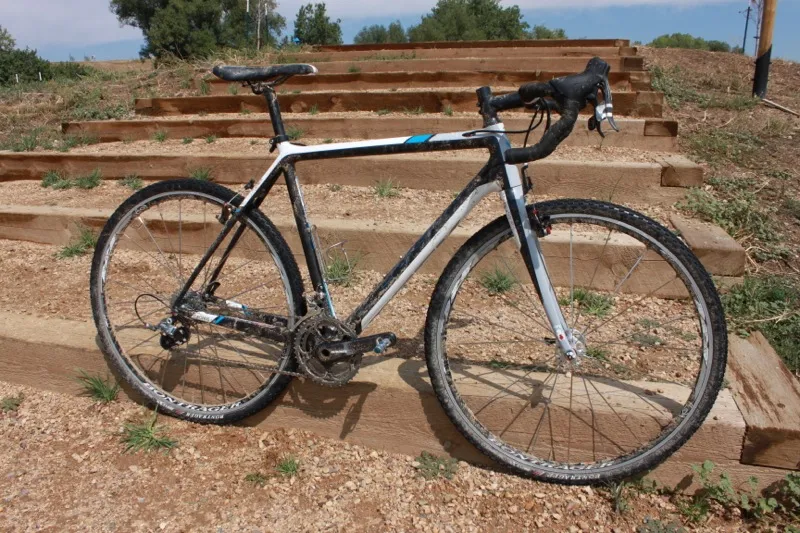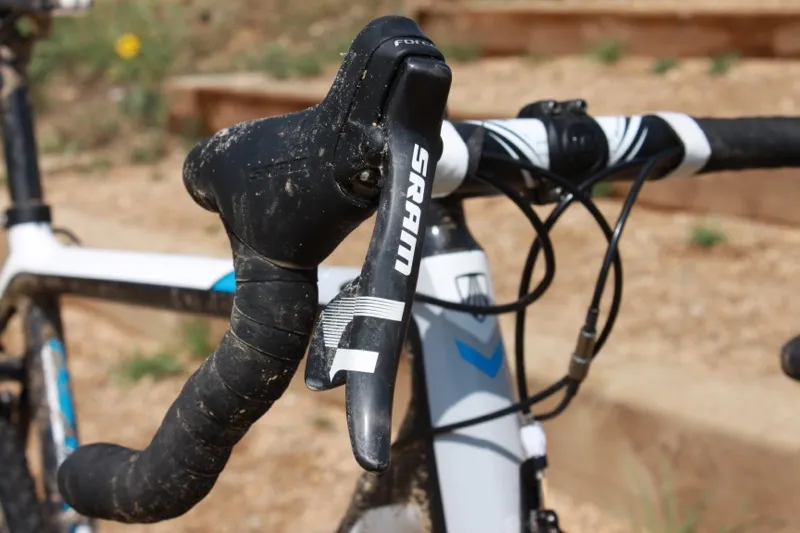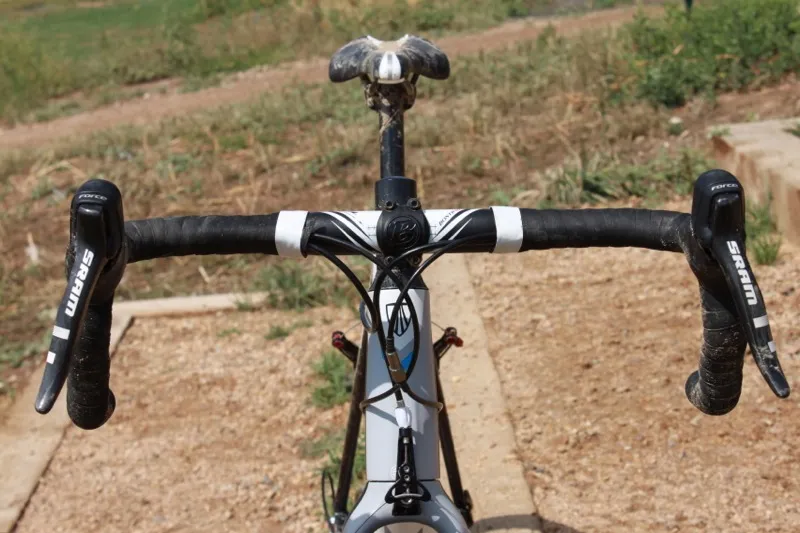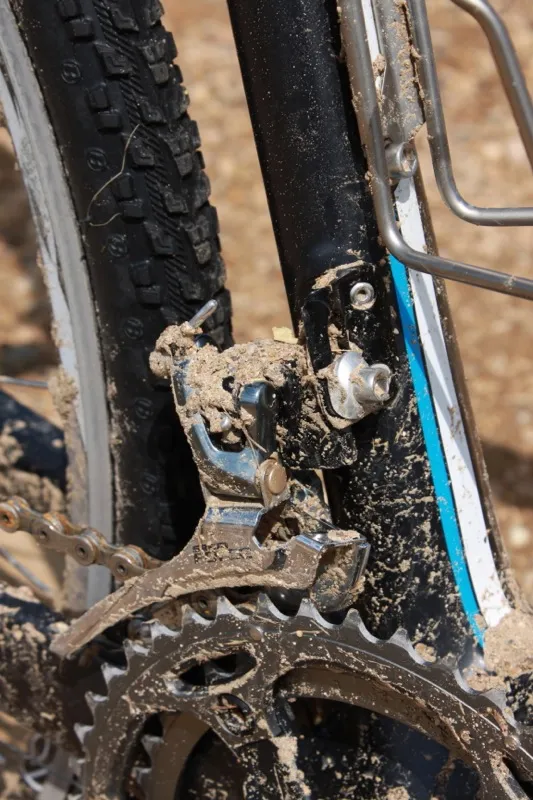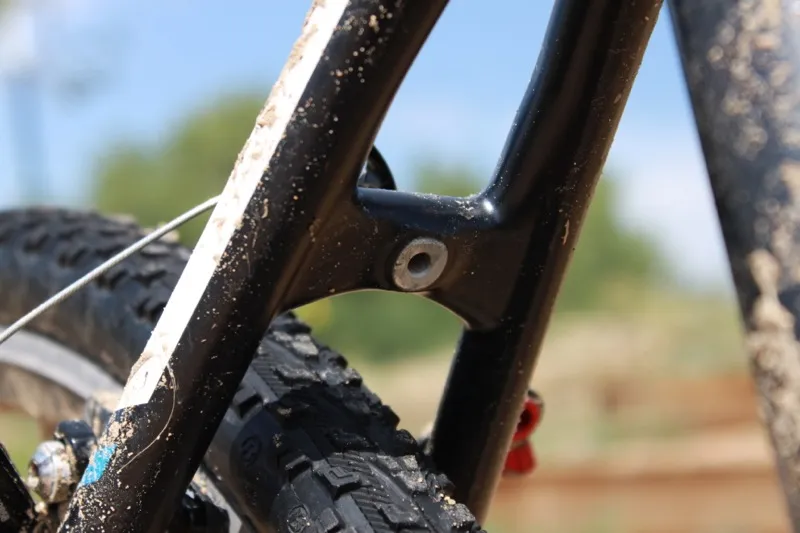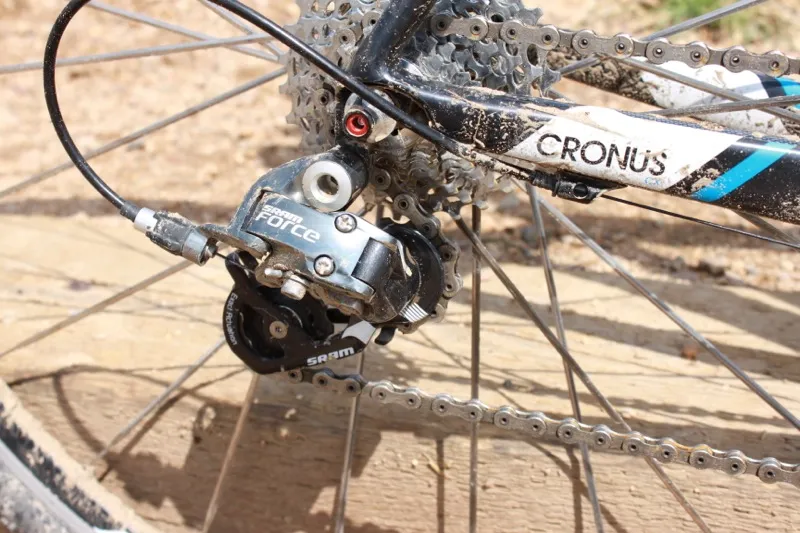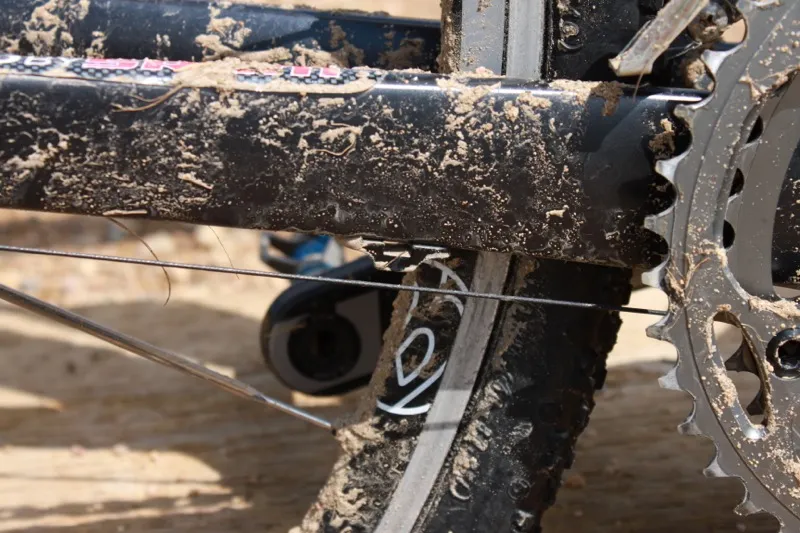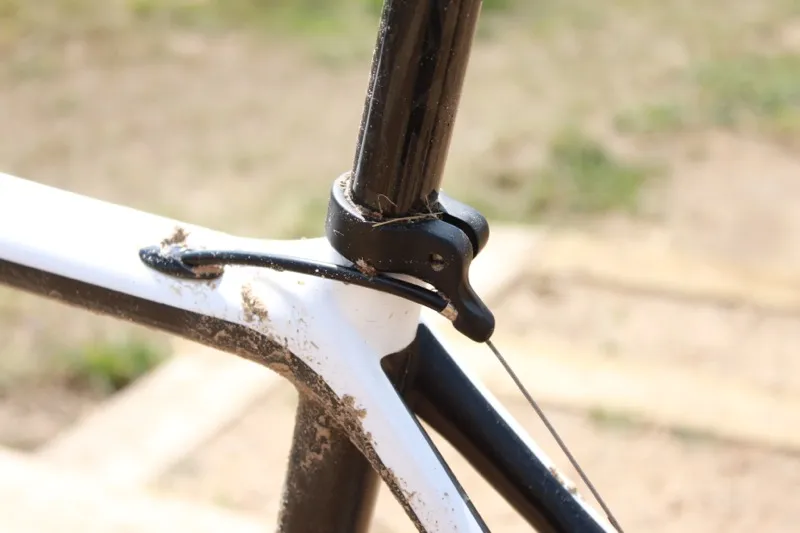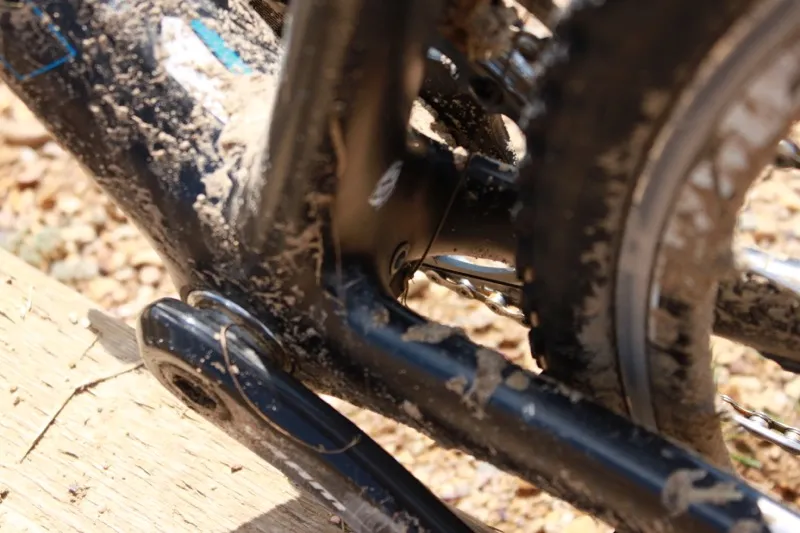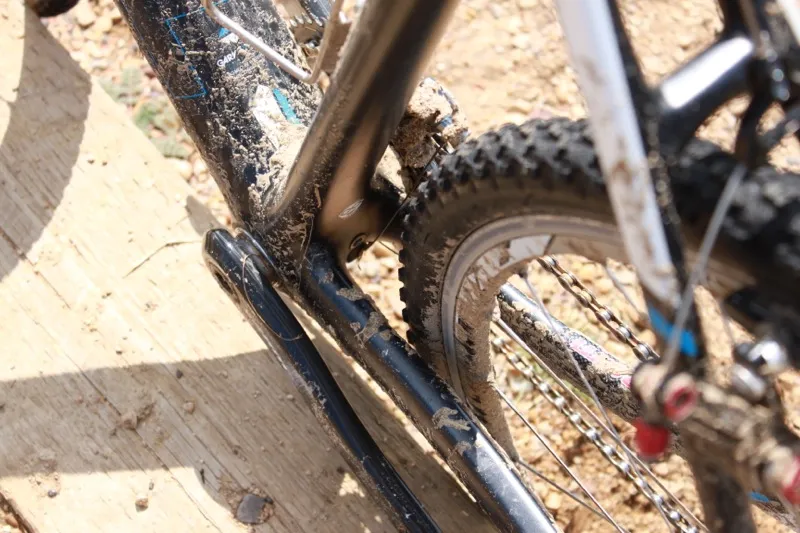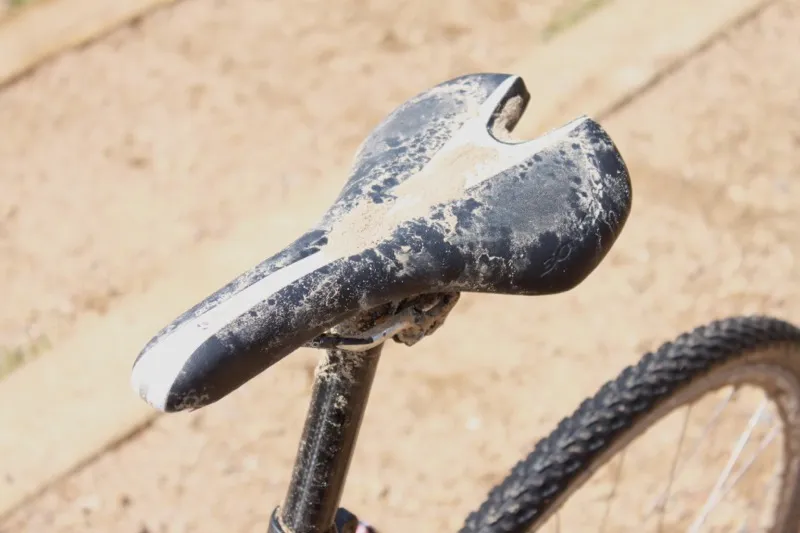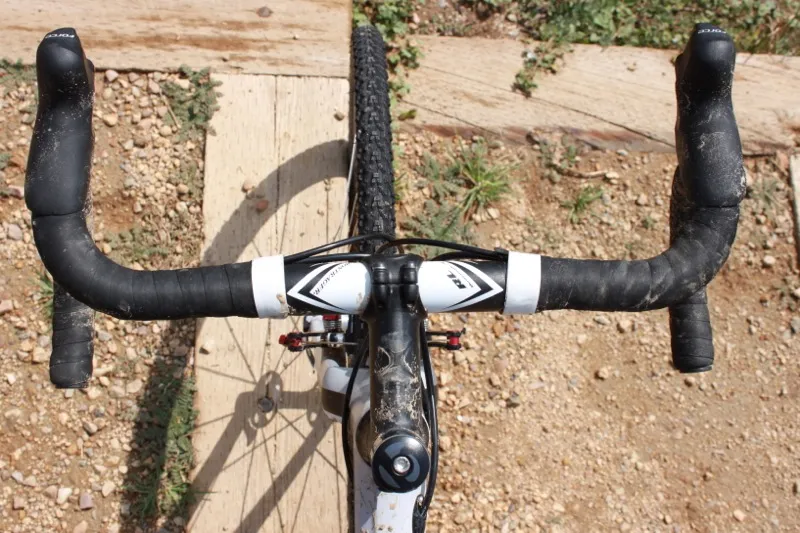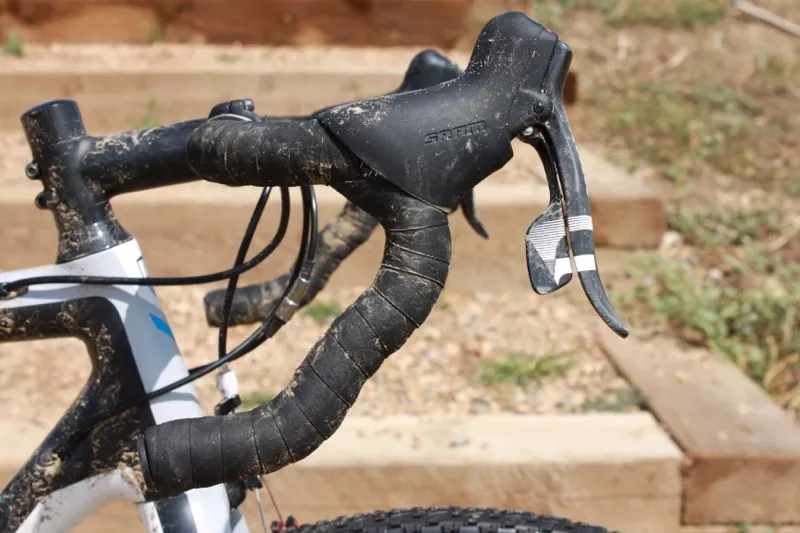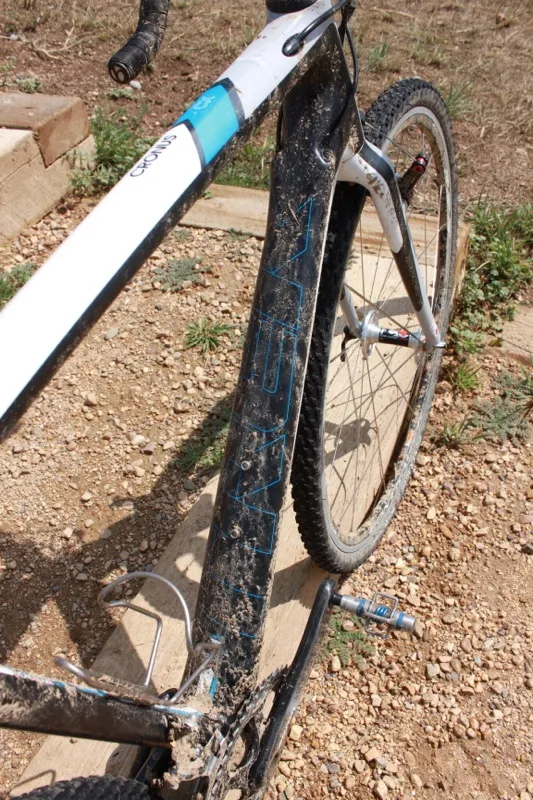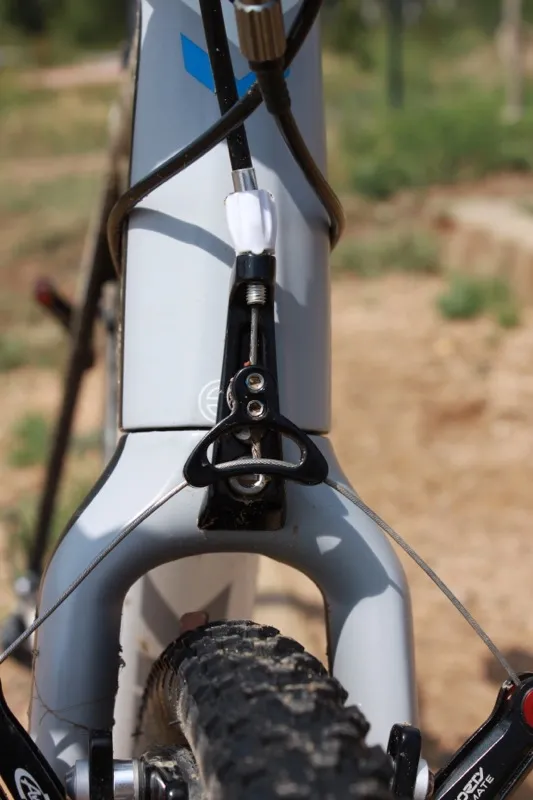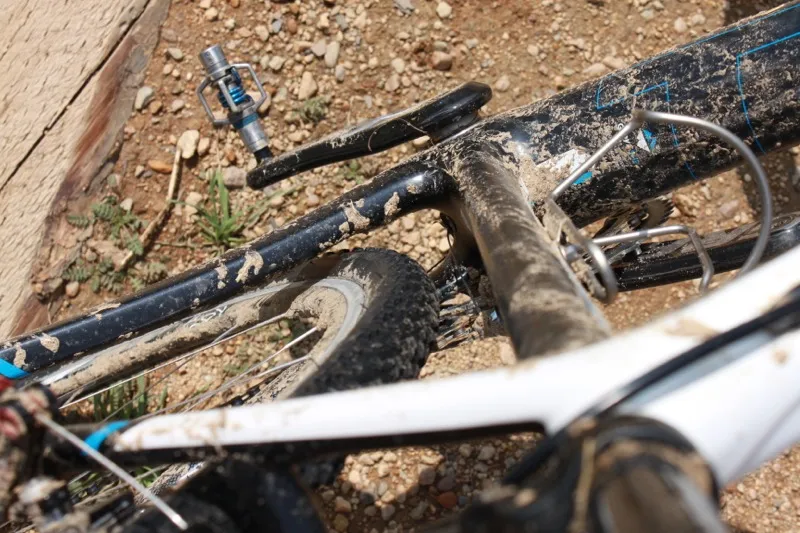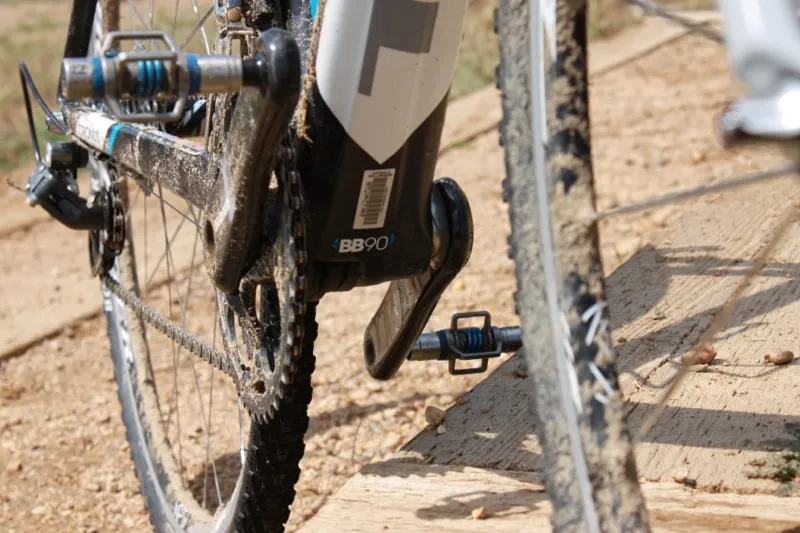Trek may be late to the game of cyclo-cross bikes but the 2012 Cronus CX has been worth the wait.
Carbon cyclo-cross bikes are a tricky subject for a bike manufacturer. They're generally second bikes (to riders) and their sales volume is low, so there's less of an incentive to spend resources developing them. Still, they take considerable effort to engineer properly and the investment manufacturers make is apparent in the end product.
Somehow, Trek have outdone just about all of their competition by producing a frame and fork that are smartly designed to capitalize, completely, on carbon's properties, while also offering component dress worthy professional racing on any continent. Trek have done this at a price that's not cheap by any means but competes with many carbon bikes specced with lower level components.
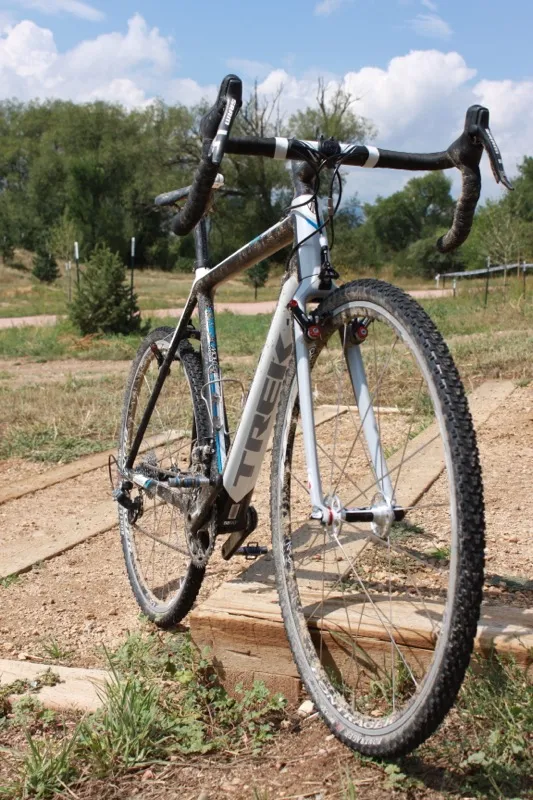
The new Cronus CX is race ready out of the box
Ride and Handling: not the smoothest, but it's an efficient bike that carves
In our opinion, ultimate stiffness is not the way to go for a cyclo-cross bike. A harsh ride leads to fatigue and fatigue makes you slow - but you still need the bike to be efficient. While Trek's Cronus CX isn't the smoothest carbon bike we've ridden, nor is it the stiffest, it is at the top of the class where the hairs of better and best may be split.
The Cronus CX does an excellent job of mixing attributes of damping rough terrain, and that awesome feeling of carving corners. It balances these handling characteristics with the opposing traits of solid steering stiffness, the fork's ability to resist brake chatter and enough pedaling stiffness to really feel like your power is being efficiently transferred to the rear wheel. Some might accuse the frame of being too muted, which is a possible way to describe it, but in our experience that muted feel also tends to be pretty darn quick, off-road.
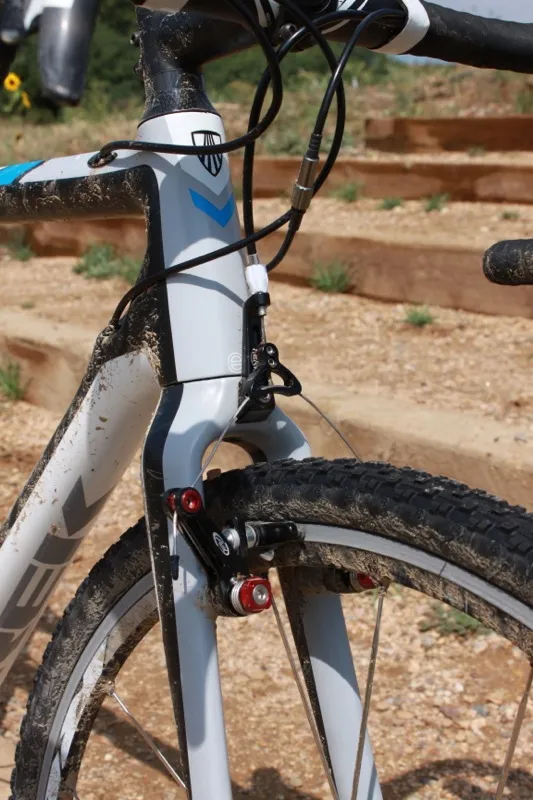
The e2 tapered head tube offers plenty of steering stiffness
The geometry of the Cronus CX contributes to the bike's ability to carve. It's an American style bike with neutral angles; our 54cm model sports a 72° head, 73.6° seat angles, a lower bottom bracket (measured: 27.2cm high/6.5cm drop), and 43cm chainstays. It has a taller head tube too, at 145mm, which provides an upright position without using a lot of spacers. The only instances were we struggled with the geometry were bunny hopping and jumping (i.e. table tops and doubles) and it seemed more due to the overall dimensions, versus the geometry and made us think that we might rather be on the size smaller (52cm) bike, since we straddle the two sizes.
We tested the Cronus CX over an eight-month period, but one that fell squarely outside of the cyclo-cross season. In an effort to assess the bike's overall capabilities we rode it in a variety of terrain and situations. We did moderate length road rides up to about three hours, with plenty of climbing and descending. We rode mountain bike trails on it, and we simulated cyclo-cross in city parks. We even raced it, but in a local short track mountain bike race, rather than the intended discipline.
Over all of these scenarios we rode the Cronus CX completely stock, even when racing, and it impressed us with its capabilities. Even the rather narrow 34mm Bontrager CX0 tires performed well on rough and bumpy off road situations.
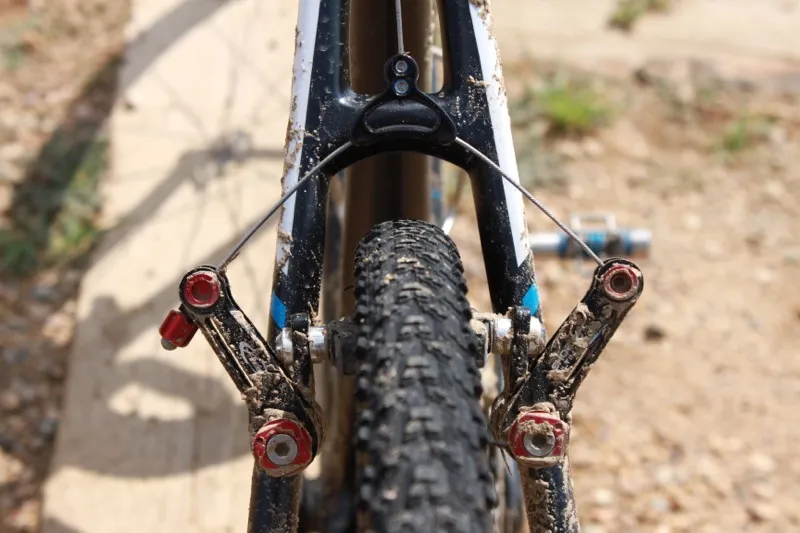
Excellent clearance for Bontrager's 34mm CX0, and Avid's excellent cantilever
Racing a short track on the bike allowed it to shine in a stressful race fueled situation. There were multiple corners where we achieved that carving feeling and surprisingly we finished in the top third of the field, which was made up completely of mountain bikes.
Frame: capitalizing on carbon for both ride and design features
The ride quality is top-notch for cyclo-cross, but as important may be the carbon frame and fork's feature set. This includes the internal cable routing, which allows the option of partial and full length housing; the bridgeless rear chainstays, which offer and amazing amount of mud clearance due to the wide BB90 bottom bracket shell they sprout from, and a huge benefit over those ’cross bikes that use a standard threaded bottom bracket or those using a BB30 design. The frame also sports a tapered head tube and hidden integrated mounts for Gary Fisher designed fenders.
The tapered carbon fork with an alloy steerer is nearly as impressive. It weighs 458g, offers ample mud clearance, and a decent amount of give, but without a hint of chatter. The fork uses Gary Fisher's FCC (Fisher Control Column) dropout design (large faces on the dropouts), which mate with the oversized 25mm axle end caps and definitely increase the steering stiffness of the system. It's important to note that the wheel itself is not compatible with non-FCC forks but FCC forks are backward compatible with all standard quick-release wheels.
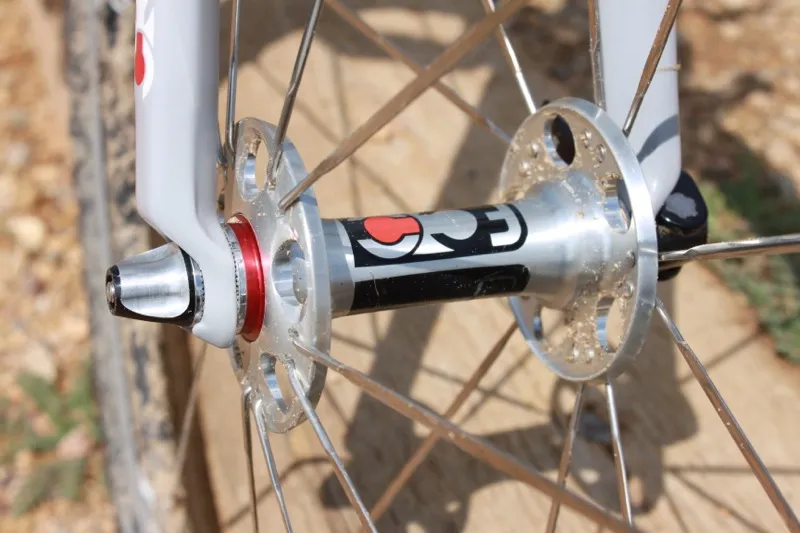
The massive 25mm end-caps on the FCC front hub seemed to add stiffness to the system
The crown mounted brake boss with integrated barrel adjuster undoubtedly helps keep the chatter at bay, but also gives cleaner routing and an additional adjustment point for the cable tension, both of which are useful and appreciated.
The carbon frame is of monocoque construction and Asian made, which doesn't detract from its performance but aids in keeping the price lower than an OCLV road model with comparable components.
Equipment: we could not have spec'd this bike better ourselves
If the Cronus CX frame and fork is in the running for our top three carbon cyclo-cross frames currently available, it's the component specification that really puts this package over the top.
Out of the box the Cronus CX is almost perfectly specced for actually racing ’cross. The SRAM Force group is arguably the best available for the discipline. The shifters hold up in adverse conditions better than the competition and they're fully rebuildable should they fail. The brake levers offer a higher mechanical advantage than others, as to offer better power to weak cantilever brakes.
They included the right brakes too; Avid's Shorty Ultimate is the best cantilever brake currently on the market, if set up properly, of course. We ran both front and rear in the narrow profile, and they offered great power and good rim clearance.
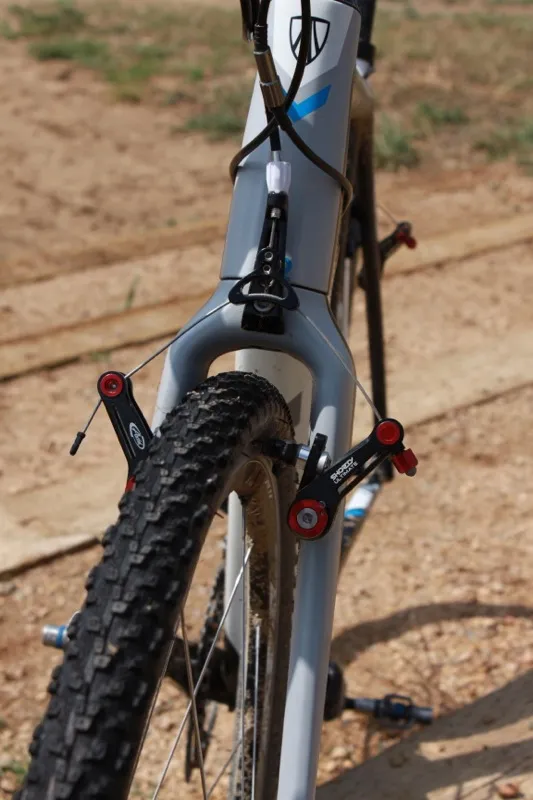
Avid's Shorty Ultimate lives up to its name
While we would have preferred to see the in-line Force crank included as part of the kit, the S900 non-series carbon crank is at least specced with a 130BCD and chainring ratios of 38/46-teeth. A pet peeve of ours is the specification of a compact crank on a cyclo-cross bike. Some project managers don't realize that you run up the steep hills in cyclo-cross thus rendering a 36-tooth chainring useless.
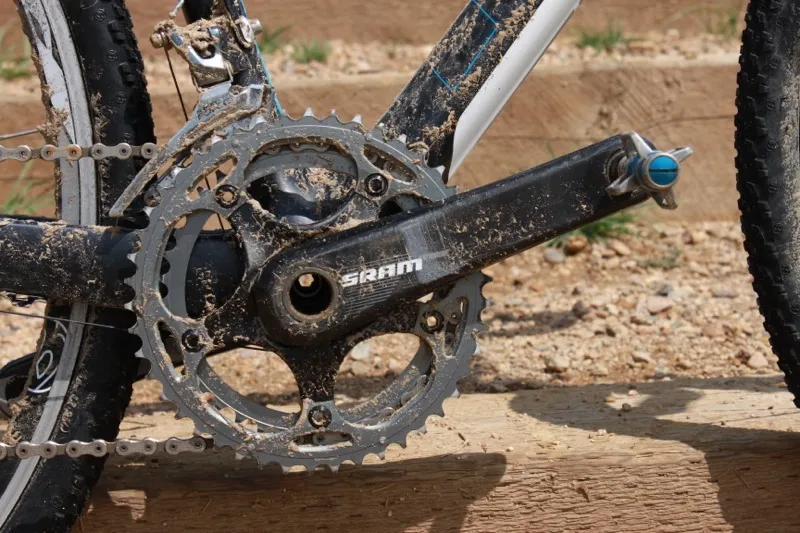
SRAM's S900 crank comes with a 130BCD spider and proper 38/46-tooth cyclo-cross rings
While we might not go out of our way to spec Bontrager's cockpit components on a different bike, Trek got the style and materials right for ’cross: alloy bar and stem and carbon seat post. All performed flawlessly during our testing: the bars and stem weren't too stiff, and the carbon post damped bumps better than an alloy equivalent.
The Bontrager Race Lite FCC wheelset is decidedly workhorse, and serves well as a training or racing wheelset. As we've mentioned, there is a tangible benefit to the 25mm FCC front axle in terms of stiffness. The wheelset proved plenty stiff and with roughly 32psi and 35psi (front/rear) in the Bontrager CX0 tires, which were surprisingly supple, we found the wheels were reasonably comfortable.
The Bontrager tires were, possibly, one of the biggest performance surprises of the bike. They were so supple that we were forced to use a gauge to set pressure as our finger check consistently put us higher than we needed. Traction wise the tires were also impressive, holding a line in everything from dry, loose-over-hard surfaces to serious mud (albeit thin, non-packing mud). They're great all-round tires.
Despite the good performance offered by the tires, a tubular wheelset and tire combo is the one upgrade most will want, and will allow the bike to truly perform to its fullest.
